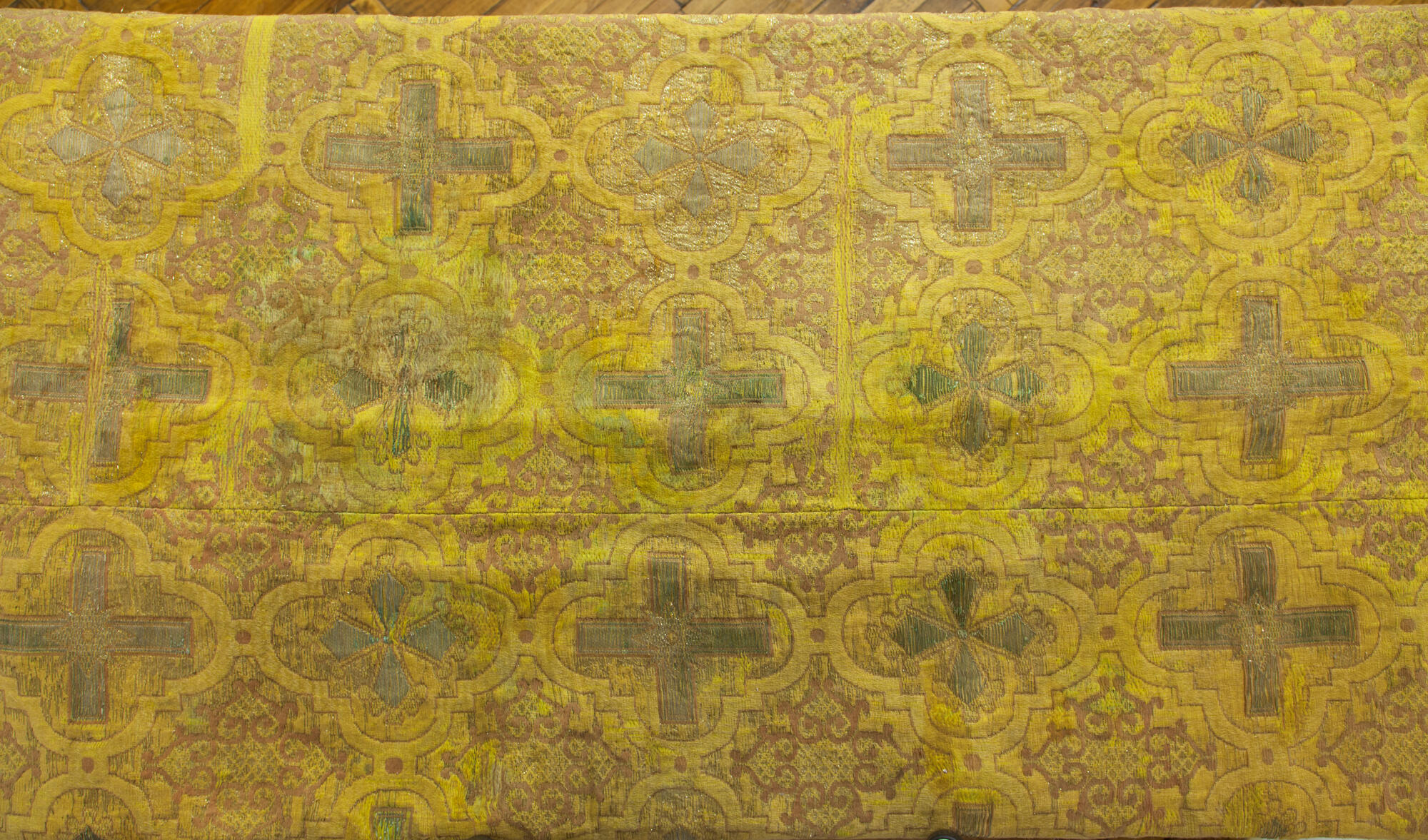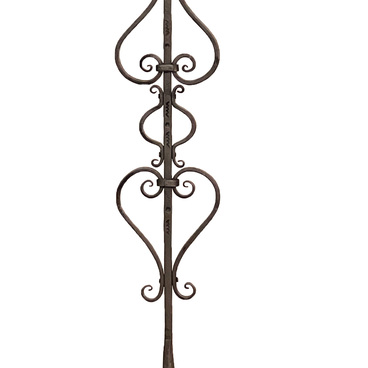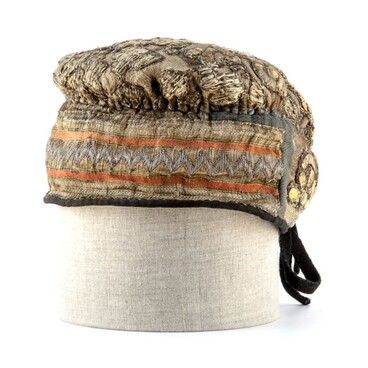Length of church fabric
Ritual fabric items had a great significance in the interior of the ancient temple. Christian symbolism was depicted on the ritual fabric items. Being an important part of the church service, the items fulfilled aesthetic functions and at the same time they solemnized the interior in a particular way. The ritual fabric items had diverse functions.
Inventory lists of some temples and monasteries surviving from the XVIth and the XVIIth centuries testify to the fact that there were enormous number of the ritual fabric items in their sacristies. However, natural ageing of fabrics when they were in daily use, numerous fires and robberies during wars, the other historic trials and tribulations reduced the quantity of ancient ritual fabric items significantly.
At present time ritual fabric items stored in museum collections account for just a small part of former temple decoration and clerical garbs.
For the most part, church fabric items were made of bright, expensive fabrics importing from eastern and western countries — taffeta, damask, satin, velvet. They were decorated with imported gems, pearls; ornamental and depictive embroidery. Threads were also imported — silk (twist and twistless), silver and gold threads (spun, fine-drawn).
Use of church fabric items, their functions, item shapes, paraments and ornamentals, pattern motives and religious-theme pictures — all of those things appeared in Russia with Christian religion and Byzantine Orthodox church service.
There were numerous various stains on the whole surface of the exhibited object before restoration. There were numerous through stains of uncertain origin from gray to rich-brown colors, a lot of stains of yellow color of various sizes, plenty of flow mottles with blooms, wax stains. There were some corrosion stains and a thick through stain of rich-brown color with a flow mottle. There were goops on the seams, thread losses and thread thin places from rubbing, tears of various sizes on the whole surface of the length of church fabric.
After restoration the exhibited object was cleaned, stains have become smaller and not so noticeable; tears, threadbare parts and losses were duplicated and strengthened, backing was reconstructed.




